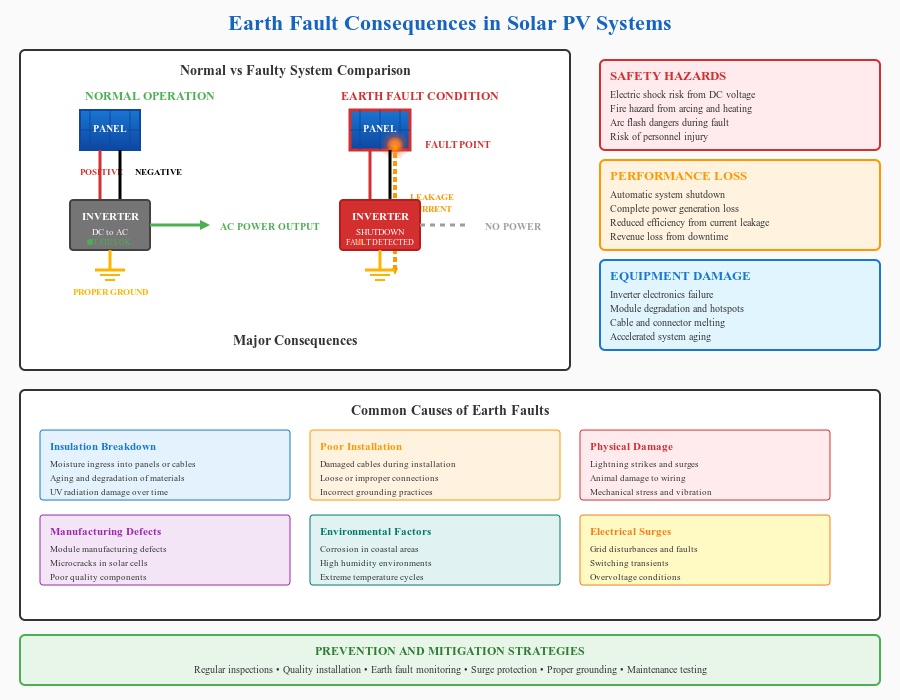
Here are the key consequences of earth faults in solar panels:
Safety Hazards
Electric Shock Risk – Earth faults create dangerous paths for current to flow through the ground or equipment frames, posing serious electrocution risks to maintenance personnel, installers, or anyone touching the system.
Fire Hazard – Persistent earth faults generate localized heating at the fault point, which can ignite nearby combustible materials, junction boxes, or cable insulation, potentially causing fires in the PV array or building.
Arc Flash – High-voltage DC systems can sustain dangerous electric arcs at fault locations, creating extreme temperatures and fire risks that are difficult to extinguish.
System Performance Issues
Power Loss – Earth faults cause current leakage to ground, reducing the overall power output and energy yield of the system. Even minor faults can result in measurable efficiency losses.
System Shutdown – Modern inverters have built-in earth fault detection and will automatically shut down the entire system when faults exceed safety thresholds, resulting in complete loss of power generation until the fault is resolved.
Reduced System Lifespan – Continuous fault conditions accelerate degradation of panels, cables, and connectors through electrical stress and localized heating.
Equipment Damage
Inverter Damage – Earth faults can damage sensitive inverter electronics, particularly the insulation monitoring circuits and safety components, leading to costly repairs or replacements.
Module Degradation – Faults within solar panels can cause hotspots, delamination, and accelerated degradation of solar cells, permanently reducing panel efficiency.
Cable and Connector Failure – Fault currents can melt cable insulation, damage connectors, and compromise the entire DC wiring system.
Operational and Financial Impact
Increased Maintenance Costs – Locating and repairing earth faults requires specialized testing equipment, trained personnel, and system downtime, all adding to operational expenses.
Lost Revenue – System shutdowns and reduced generation directly impact energy production and financial returns, especially critical for commercial solar installations.
Insurance and Warranty Issues – Undetected or improperly addressed earth faults may void equipment warranties and create liability issues.
Grid Compliance – Earth faults can cause the system to fall out of compliance with grid connection standards, potentially resulting in disconnection from the utility network.
Common Causes to Watch For
- Insulation breakdown due to moisture ingress, aging, or physical damage
- Poor installation practices (damaged cables, loose connections)
- Module manufacturing defects or microcracks
- Animal damage to wiring
- Corrosion in coastal or high-humidity environments
- Lightning strikes or electrical surges
Prevention is Key: Regular inspection, proper installation practices, quality components, and functional earth fault monitoring systems are essential to minimize these consequences and maintain safe, efficient solar PV operations.